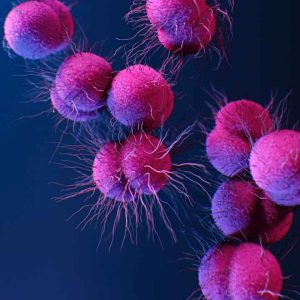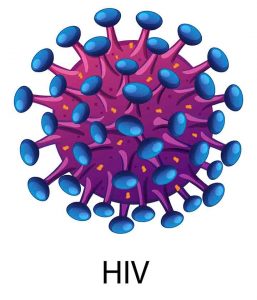Table of Contents
Incurable STDs Overview
The most common incurable STDs are HIV and Hepatitis-B. Sexually transmitted diseases (STDs) are transmitted via vaginal, anal, or oral pathways.
STDs are exceptionally common. In fact, in the United States, 20 million new cases are reported each year, with 50 percent of these cases usually affecting people between the ages of 15-25.
The good news is that most STDs are curable and, with specific treatment procedures, even those without a cure can be effectively managed or minimized.
The Common STDs List
- Syphilis
- Hepatitis-B
- Gonorrhea
- Herpes simplex virus
- Chlamydia
- HIV
- Trichomoniasis
- Human papillomavirus infection (HPV)
- Hepatitis affects the liver and can lead to cirrhosis or liver cancer (scarring of the liver). They’re both fatal. Three kinds of hepatitis exist: A, B, and C. All are often transferred through sexual intimacy (not just intercourse), but it is not possible to cure only Hepatitis B.
- Herpes is transmitted via intimate contact. HSV-2(genital herpes) manifests around the rectum and genitals as blisters and sores. HSV-1, another type of herpes, is spread through saliva and often leaves cold sores. It can induce genital herpes as well.
- HIV is the virus that causes AIDS, which weakens the immune system and makes a person sexually transmitted through body fluids(semen, vaginal secretions) very susceptible to a range of diseases.
- HPV is a virus that develops genital warts, cancer of the cervix, and oral cancer. In such cases, both cancers can be lethal.
Curable STDs are bacterial
Some STDs are Asymptomatic
Symptoms of Chlamydia
Chlamydia may be an infection of your genital tract that is bacterial. Because early-stage infections often cause few or no signs and symptoms, Chlamydia could even be hard to detect.
Symptoms usually begin one to three weeks after you’ve been exposed to chlamydia and will be mild and pass quickly once they occur.
Sign & symptoms may include;
- Symptoms and signs may include:
- Distressed urination
- Lower abdominal pain
- In women, vaginal discharge
- Discharge of the penis in males
- Pain in women during sexual activity
- Bleeding in women between cycles
- Testicular Pain
Symptoms of Gonorrhea
A bacterial infection of your genital tract may be gonorrhea. The bacteria in your mouth, throat, eyes and anus can also grow. The symptoms of primary gonorrhea usually appear within 10 days after exposure. However, before signs or symptoms occur, some individuals could even be infected for months.

Gonorrhea signs and symptoms may include;
- Thick discharge from the penis or vagina
- The sensation of pain or burning when urinating
- Heavy menstrual bleeding between periods
- Testicles are painful, swollen
- Painful intestinal movements
- Anal itching
The Signs of Trichomoniasis
A common STD caused by a microscopic, one-celled parasite called Trichomonas vaginalis may be trichomoniasis. During sexual intercourse with someone who already has the infection, this organism spreads.
In persons, the organism normally infects the track but often does not cause any symptoms. In women, trichomoniasis usually infects the vagina. Trichomoniasis causes symptoms that will occur within five to twenty-eight days of exposure and range from mild discomfort to extreme inflammation
Sign & symptoms may include;
- Clear, white, greenish, or yellowish discharge
- Discharge from the penis
- Strong vaginal odor
- Vaginal itching or irritation
- Itching or irritation inside the penis
- Pain during sexual activity
- Painful urination
Symptoms of HIV
HIV is a human immunodeficiency virus infection. HIV interferes with the capacity of the body to repel disease-causing viruses, bacteria, and fungi, and it can cause AIDS, a chronic, life-threatening illness.
You won’t have any signs when you are first infected with HIV. Some individuals, typically two to 6 weeks after being infected, experience a flu-like illness. still, the only way you know whether you have HIV is by checking.

Symptoms and early signs
Signs and signs of early HIV typically fade within 7 days to a month and are frequently mistaken for those of another viral infection. You’re extremely contagious during this period.
More-persistent or serious symptoms of HIV infection may not occur after the initial infection for 10 years or more.
Symptoms of early-stage HIV can include;
- Fever
- Headache
- Sore throat
- Swollen lymph glands
- Rash
- Fatigue
You will develop mild infections or persistent signs and symptoms as the virus continues to spread and kill immune cells, such as;
Swollen lymph nodes, one of the major signs of HIV infection, also;
- Diarrhea
- Weight loss
- Fever
- Cough and shortness of breath
- Late-stage HIV infection
- Signs and symptoms of late-stage HIV infection include:
- Persistent, unexplained fatigue
- Soaking night sweats
- Shaking chills or fever above 100.4 F (38 C) for several weeks
- Swelling of lymph nodes for quite three months
- Chronic diarrhea
- Persistent headaches
- Unusual infections
Genital Herpes Symptoms
Genital herpes can be a highly infectious STD caused by a form of herpes simplex virus (HSV) that, through small breaks in the skin or mucous membranes, enters the body.
Most people with HSV never realize that they need it, because they do not need any signs or symptoms, or because the signs and symptoms are always so mild that they go unnoticed.
The primary episode is usually the worst when signs and symptoms are apparent. Some individuals never have a second episode. However, for several years, some may have recurring episodes.
The signs and symptoms of genital herpes can include;
- In the genital and anal areas and areas adjacent, slightly red bumps, blisters (vesicles), or raw sores (ulcers)
- Around the genital region, buttocks, and internal thighs, pain or scratching
- Ulcers can make painful urination. In your genital region, you’ll also have pain and tenderness before the infection clears. You will have flu-like signs and symptoms during an initial episode, such as headache, muscle aches, and fever, as well as swollen lymph nodes in your groin.
- In certain cases, even though sores aren’t present, the infection is also active and infectious.
Human papillomavirus (HPV) infection and genital warts symptoms
One of the most prevalent forms of STDs is infection with HPV. Some HPV occurs in women and puts them at high risk of developing cervical cancer. Other styles cause genital warts. Typically, HPV has no symptoms or signs.
The symptoms and signs of genital warts include;
- In your genital region, thin, flesh-colored, or gray swellings
- Approximate several warts that fight a cauliflower form
- Itching in your genital region or pain
- Intercourse bleeding
- Sometimes, however, no symptoms are caused by genital warts. Genital warts may also have a diameter of as little as 1 millimeter or can multiply into large clusters. In the mouth or throat of an individual who has had oral sex with an infected person, warts may also develop.
Symptoms of Hepatitis
All the infectious viral diseases that damage your liver are hepatitis A, hepatitis B, and hepatitis C. Hepatitis B and C are the most severe of the three, but each can lead to inflammation of your liver. Signs or signs never occur in other people.
Signs and symptoms can occur several weeks after exposure, with the exception of those who do, and may include;
- Fatigue
- Nausea and vomiting
- Abdominal pain or discomfort, especially within the area of your liver on your right side beneath your lower ribs
- Loss of appetite
- Fever
- Dark urine
- Muscle or joint pain
- Itching
- Yellowing of your skin and thus the whites of your eyes (jaundice)
Symptoms of Syphilis
Syphilis is an infection that is bacterial. Your genitals, skin, and mucous membranes are affected by the disease, but many other parts of your body, including your brain and heart, may also be involved.
Syphilis signs and symptoms may occur in three primary, secondary, and tertiary stages. Some individuals also experience latent syphilis, where blood tests are positive for the bacteria, but there are no signs.
Initially, at the site of infection, only a small, painless sore (chancre) may be present, usually in the genitals, rectum, tongue, or lips. Symptoms can include, as the disease worsens,
Rash marked with penny-sized red or reddish-brown sores over every part of your body, including your palm and soles
- Fever
- Enlarged lymph nodes
- Fatigue and a vague feeling of discomfort
- Soreness and aching
- Without treatment, syphilis bacteria may spread, resulting in serious viscus damage and death years after the first infection.
Some of the signs and symptoms of late-stage syphilis are;
- Lack of coordination
- Numbness
- Paralysis
- Blindness
- Dementia
There is also a complication that happens when a pregnant woman with syphilis transfers the disease to her unborn baby, called congenital syphilis. Congenital syphilis is sometimes life-threatening and debilitating, so care for pregnant women with syphilis is essential.
Neurosyphilis
The systema nervosum can be affected by syphilis at any point. Neurosyphilis may be asymptomatic or may trigger;
- Headache
- Behavior changes
- Movement problems
Takeaway
There are some incurable STDs without any apparent signs. Several individuals may be infected with STDS. This indicates that if you want to avoid transmission, it is important to practice safe sex.
Abstinence from some form of sexual contact or contact with open sores and body fluids of a person who contracted it is the only way to the complete prevention of STDS. But there are also other methods of avoiding STDs.
During sex, condoms and dental dams or head barriers are known to be successful when used correctly. It can also help to avoid STDs by refraining from sex with multiple partners and preferring a monogamous relationship instead.
Some STDs have vaccines available, such as HPV and hepatitis A and B. Talking to a healthcare professional about the vaccines you have available is important.
If there is a chance of any STDs, it is also necessary to be routinely screened for HIV. Early diagnosis of HIV allows successful antivirals to interfere early on.
Using pre-exposure prophylaxis also decreases the risk of HIV transmission (PrEP). PrEP can be a mixture of medicines that will minimize the risk of HIV acquisition or transmission with regular use prior to possible exposure.
If you have any of the symptoms listed above, do not hesitate to contact a doctor. In the case of STDs, prevention is often safer than cure. And early diagnosis & treatment is very important and affective when someone is sick. Therefore, consult a physician and follow his advice.
Last Updated on March 5, 2023 by Learn From Doctor Team






